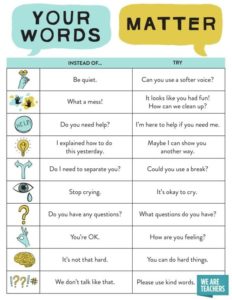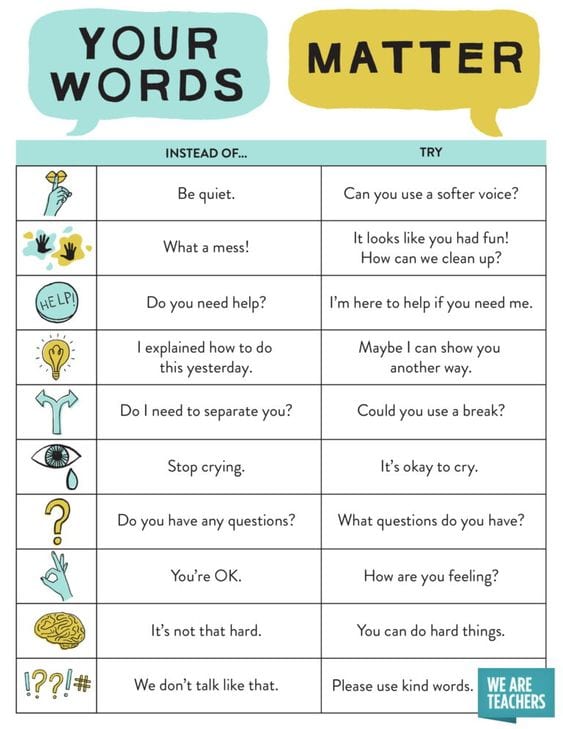Student Contributor: B. Wells
 Using positive teacher language is when the teacher focuses on the good outcome of when a student does something right instead of focusing on what happens when the student does something wrong. The tool is useful to encourage students and the teacher gets to model treating others well through this tool.
Using positive teacher language is when the teacher focuses on the good outcome of when a student does something right instead of focusing on what happens when the student does something wrong. The tool is useful to encourage students and the teacher gets to model treating others well through this tool.
Positive teacher language is when the teacher uses their words to help a student in a more influential way. The tool should be used to correct behavior when a student is not following directions and is not meeting the standards set for expectations. It is a way to rephrase what you say. Instead of saying ‘don’t do this’, say ‘do this instead’. This tool should be used to help students know what they should be doing, instead of just telling student what they shouldn’t be doing. An important element to keep in mind is that this is not a passive approach to correct behavior, it needs to be direct and used intentionally.
This falls under the corrective phase of management. It is placed under this phase of management because it is a way to correct the misbehavior with the use of influential language that is not negative. The teacher uses the power of their language. They tell the child what the correct behavior is instead of what the wrong behavior is. This falls under the student-directed and collaboration theory. The positive language is student focused and gives the child an idea of what they are doing right. It requires the teacher’s use of the language, but the students are the ones who get to make the decision how to respond. So, the student and the teacher work together to use this tool effectively.
More Information –
Tool Source: Professor Nollmeyer- 'Verbal Intervention' paper


